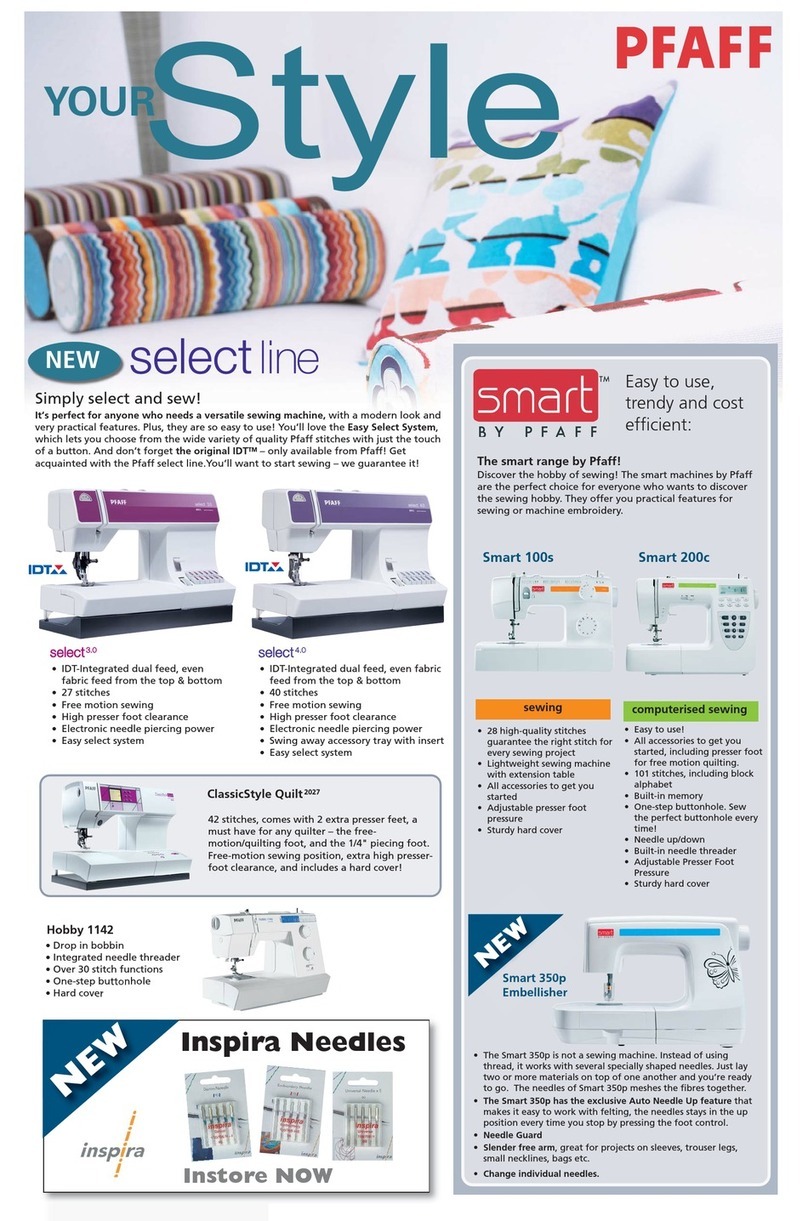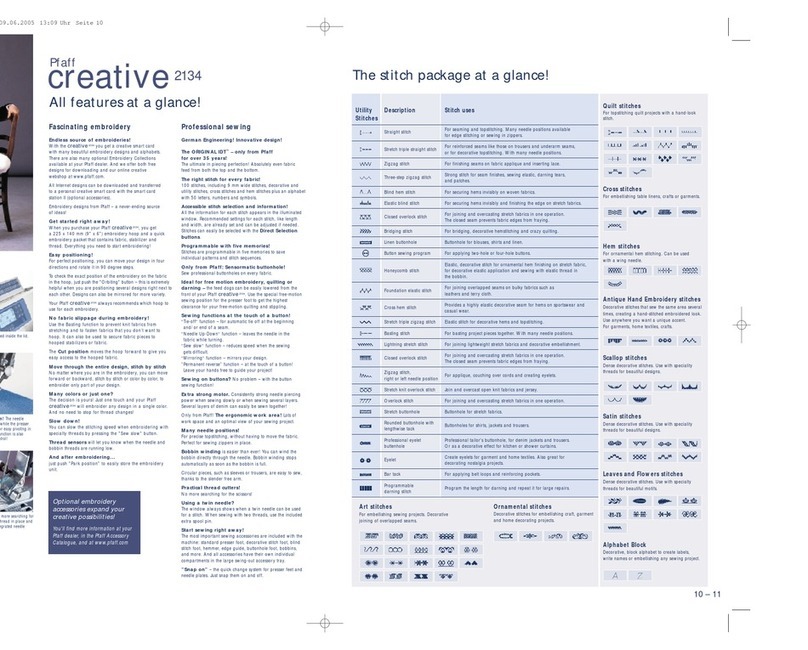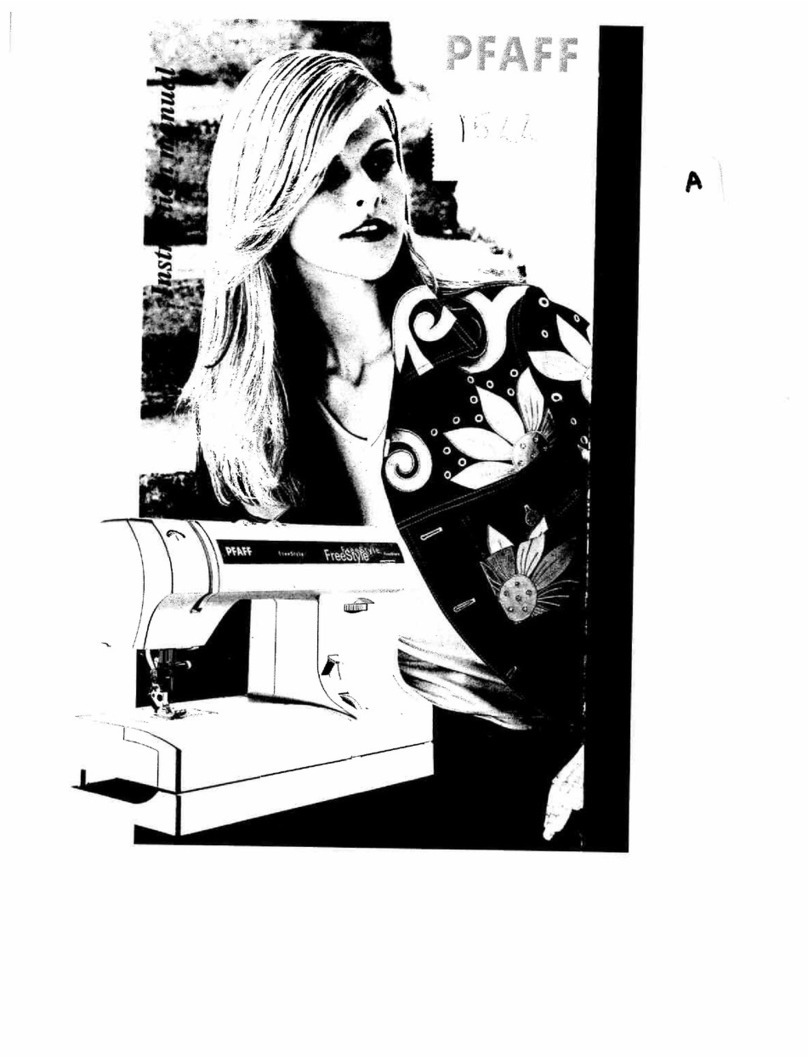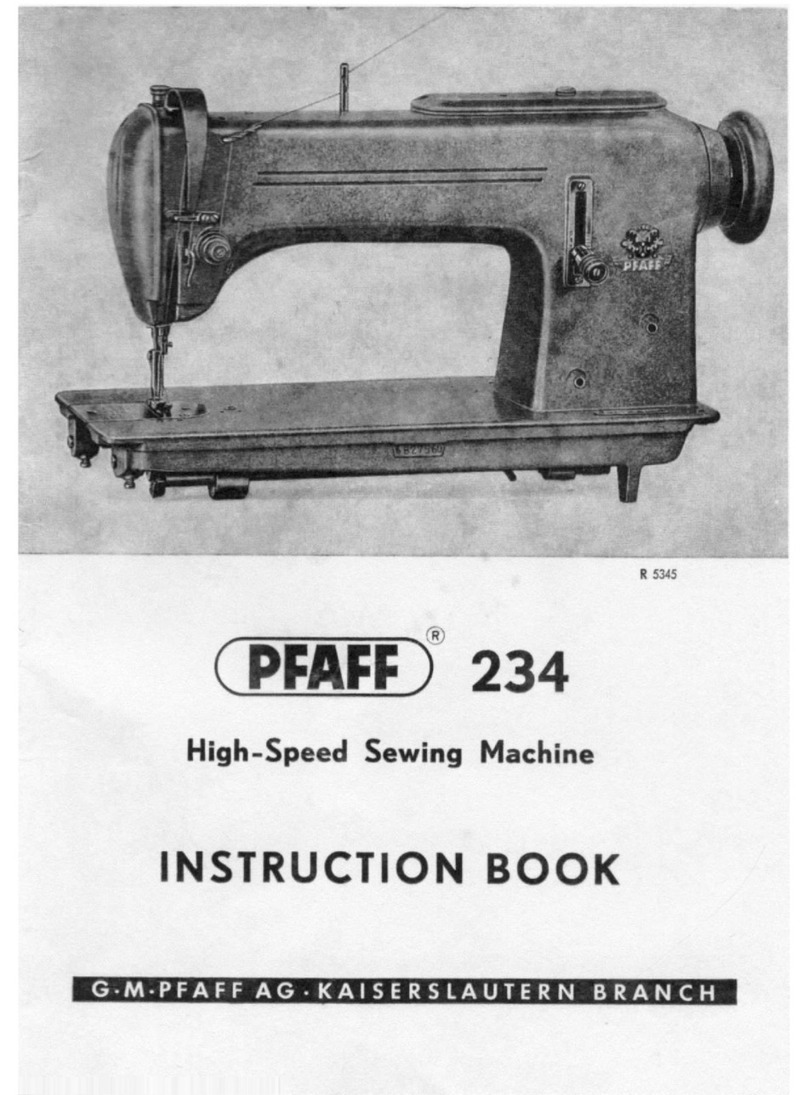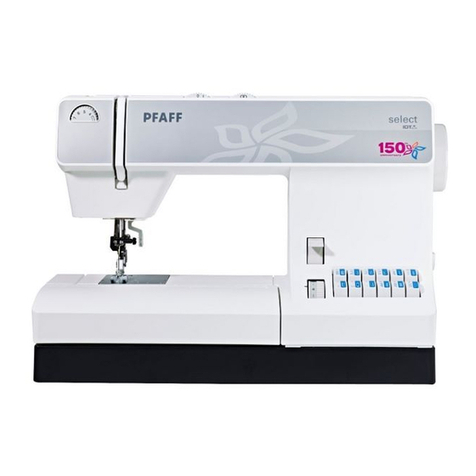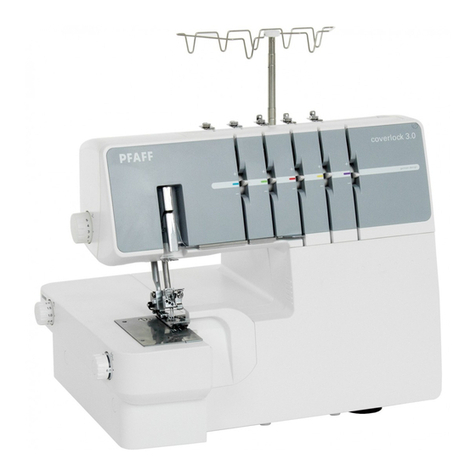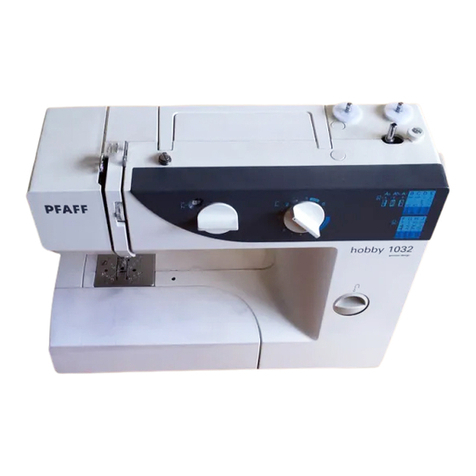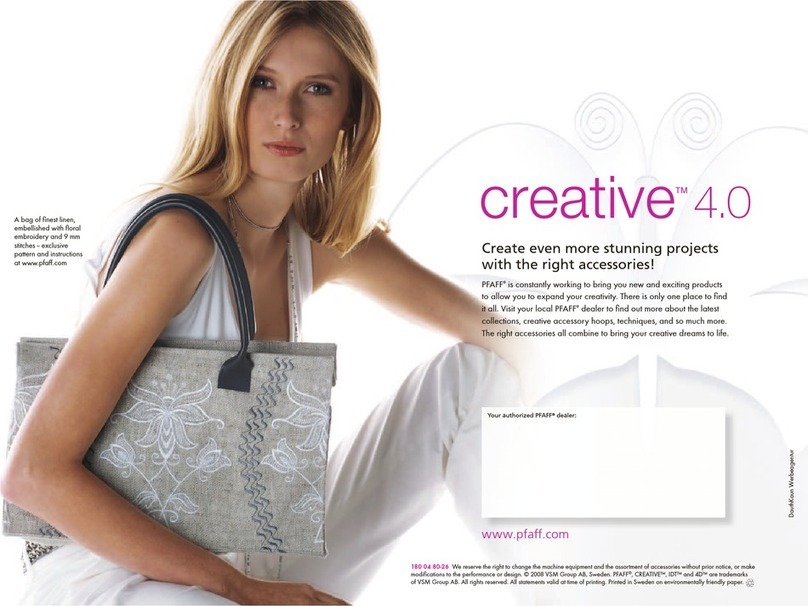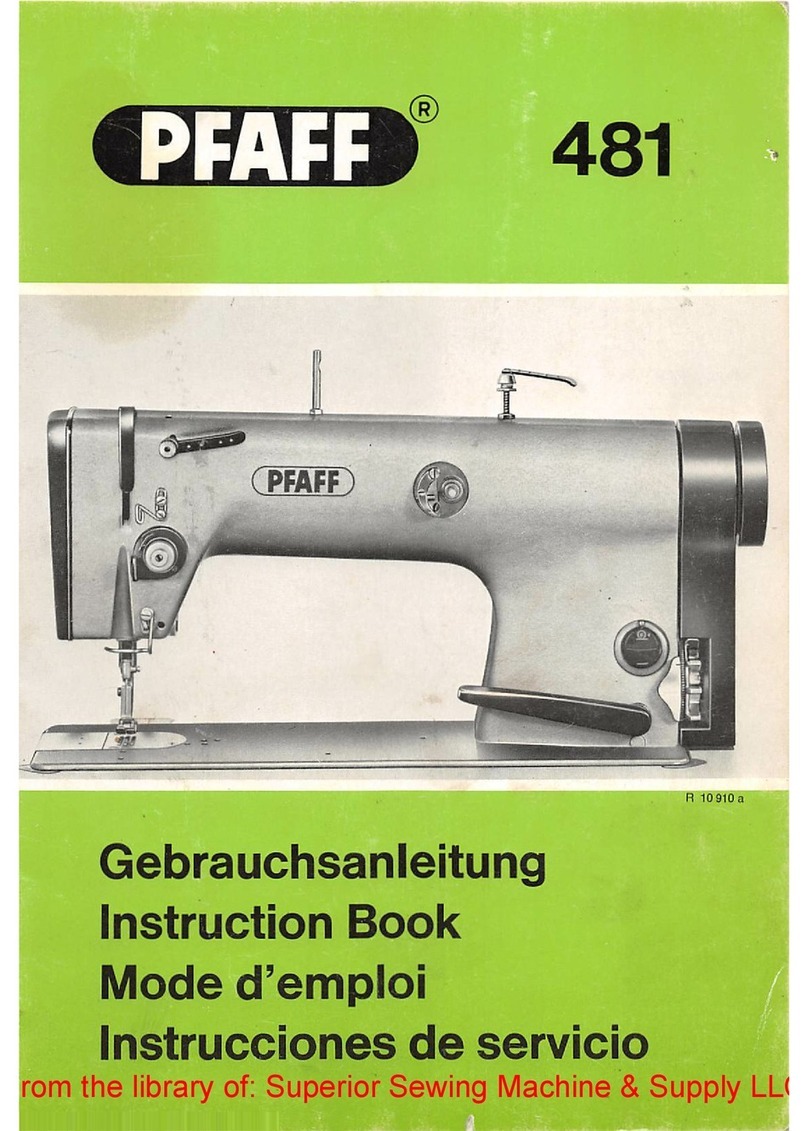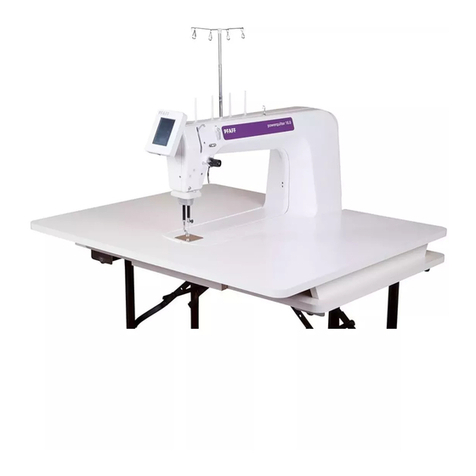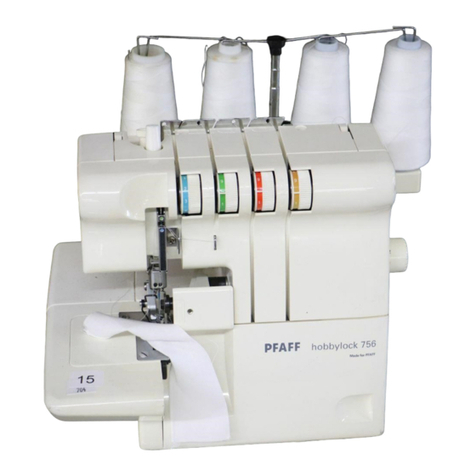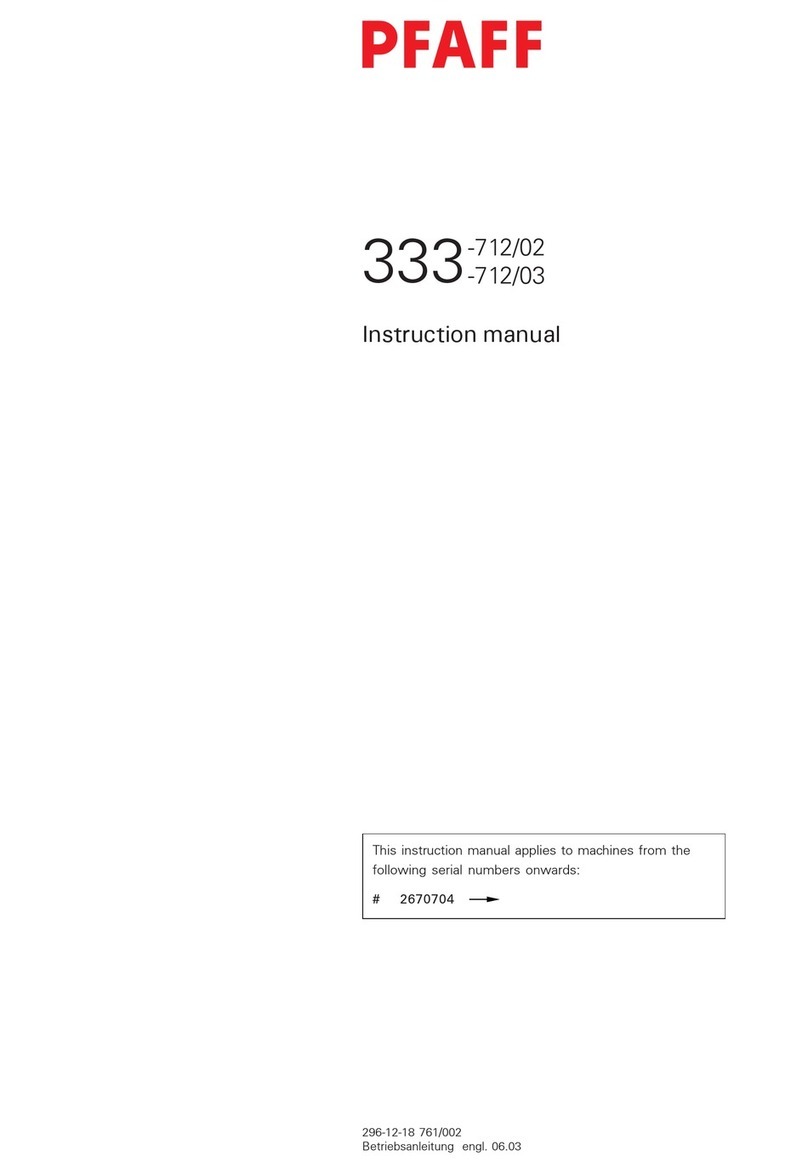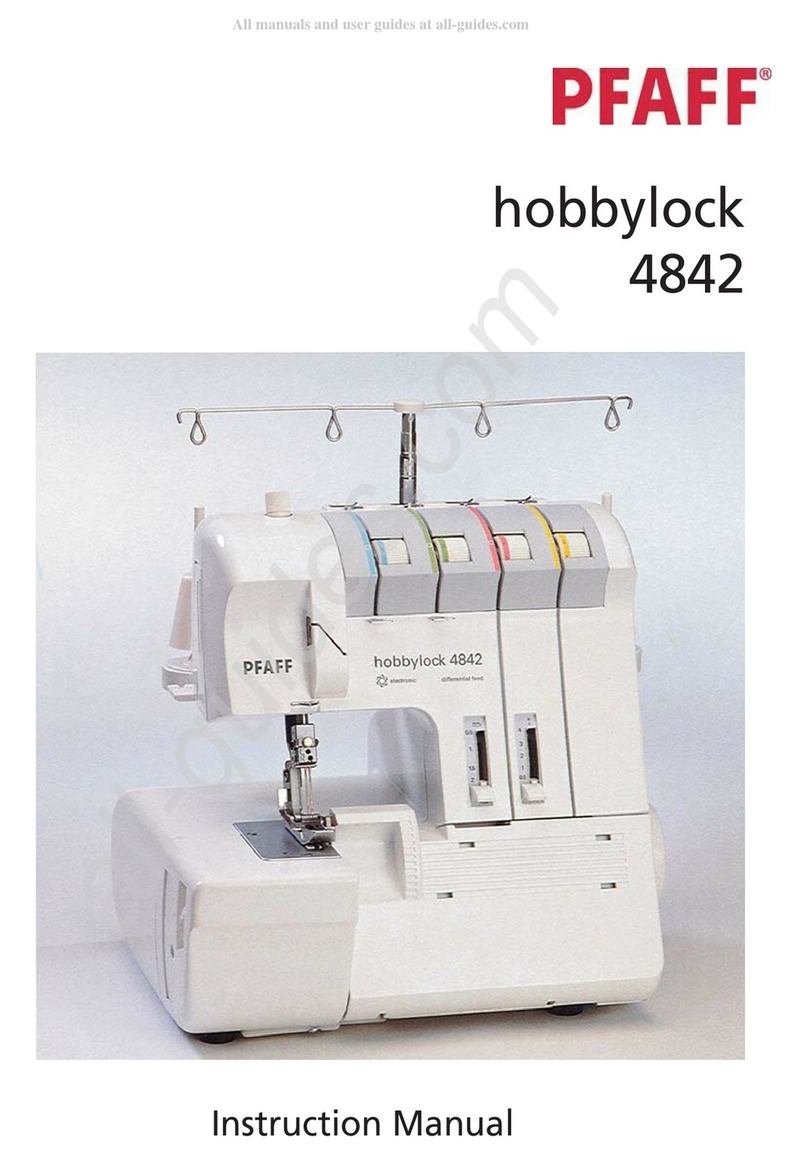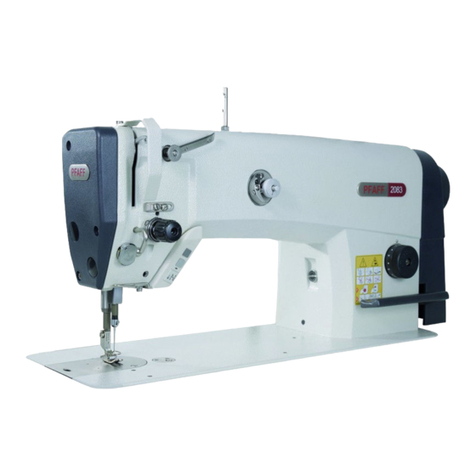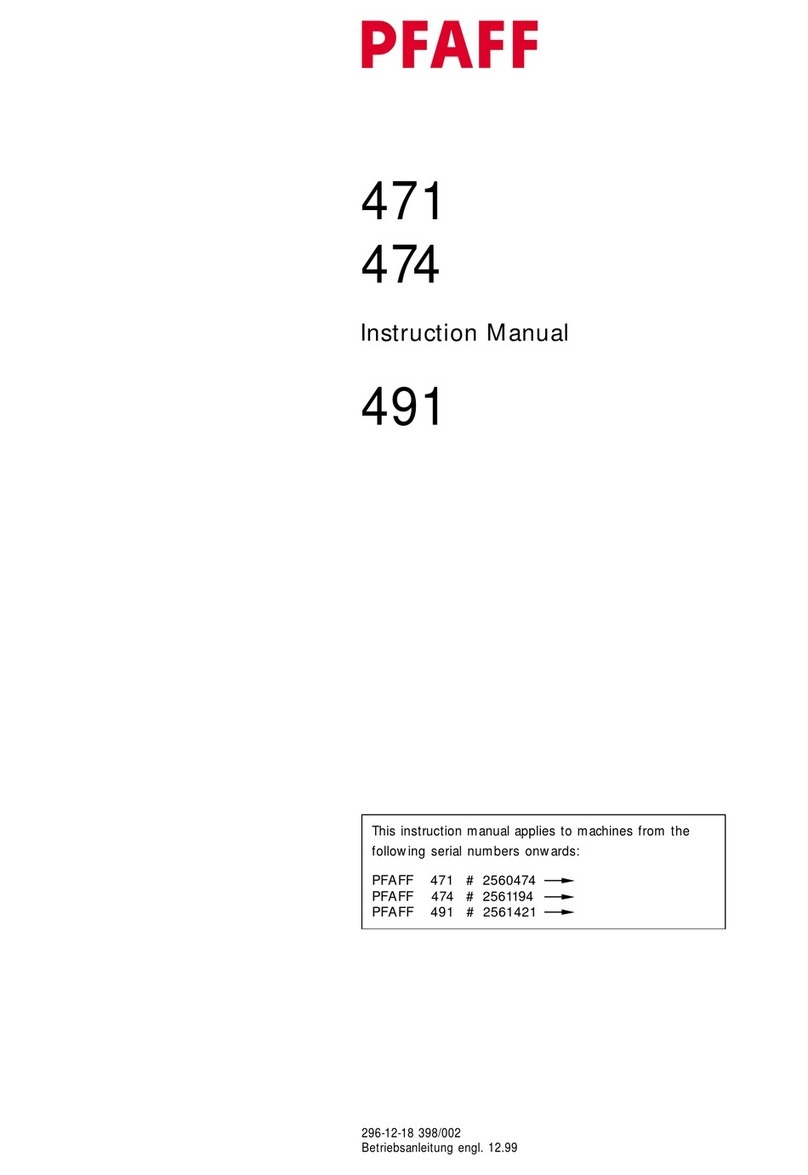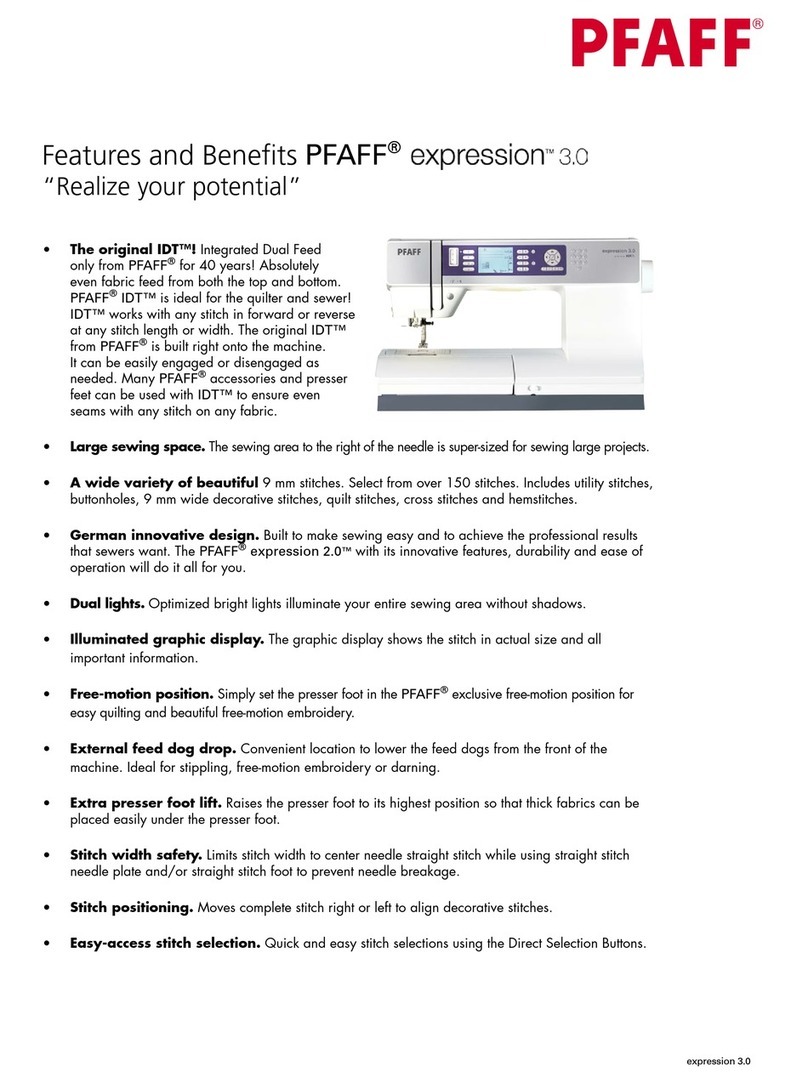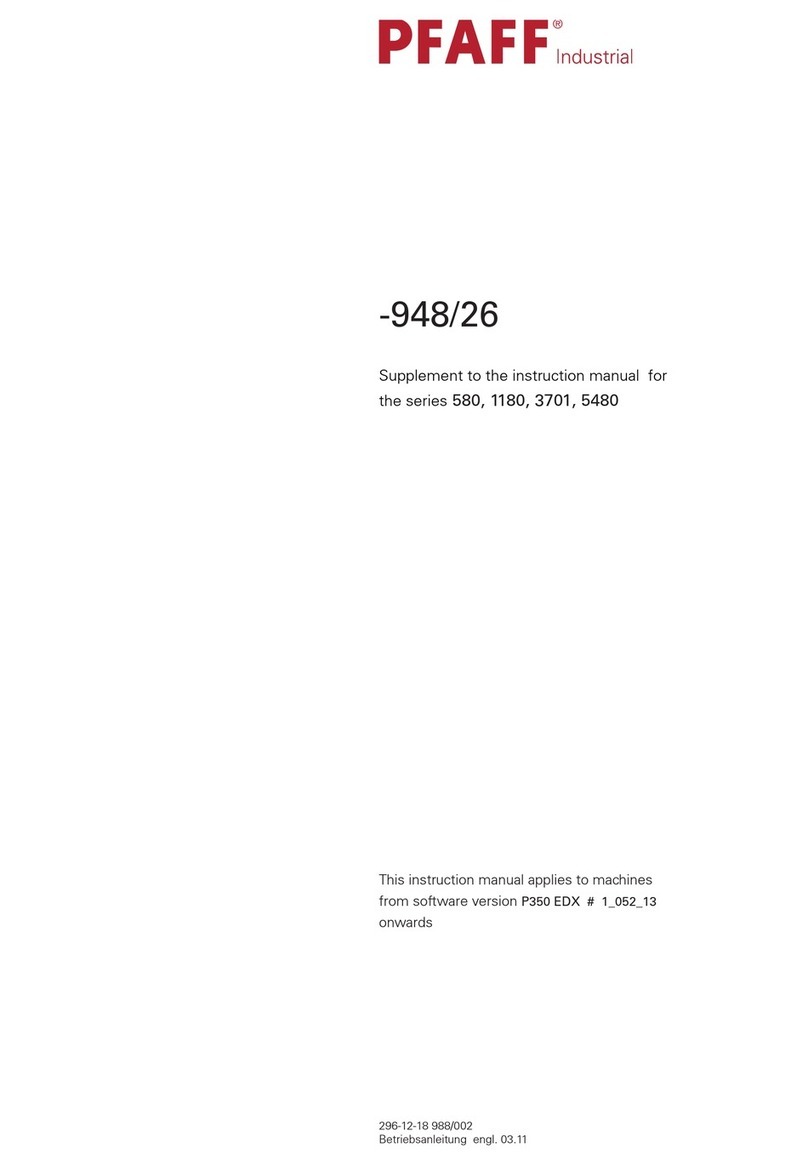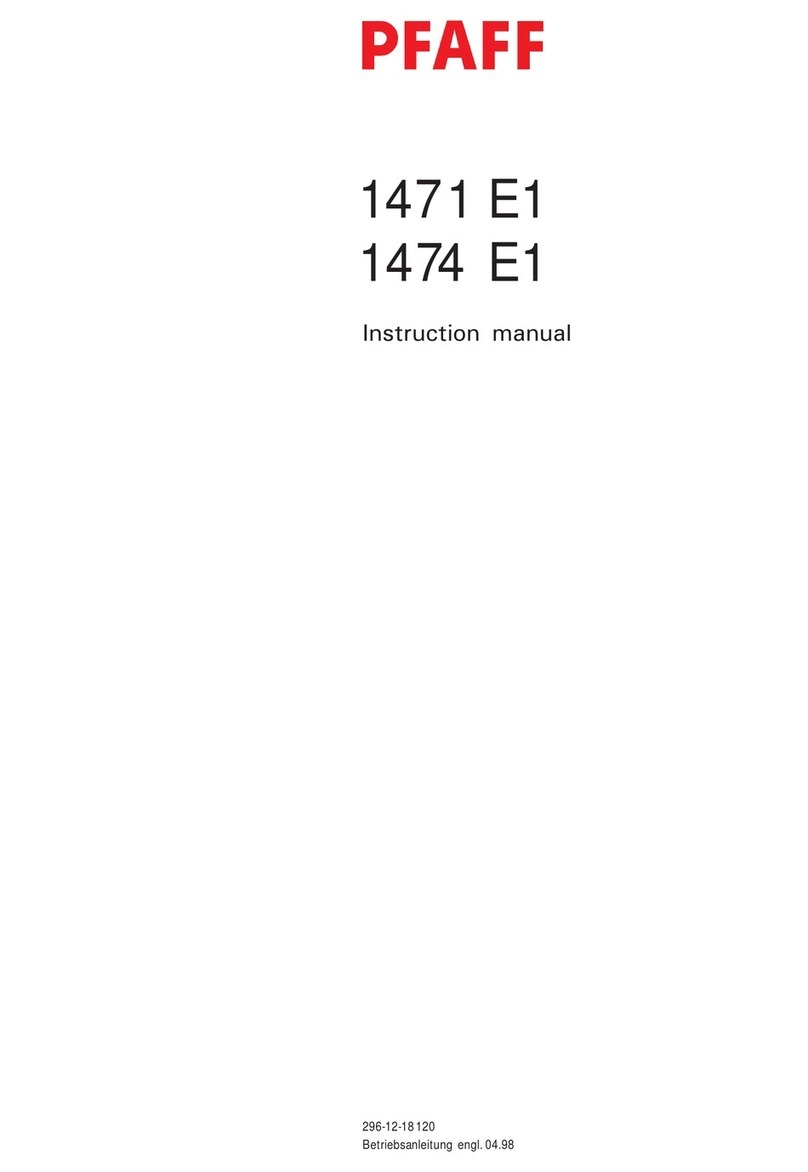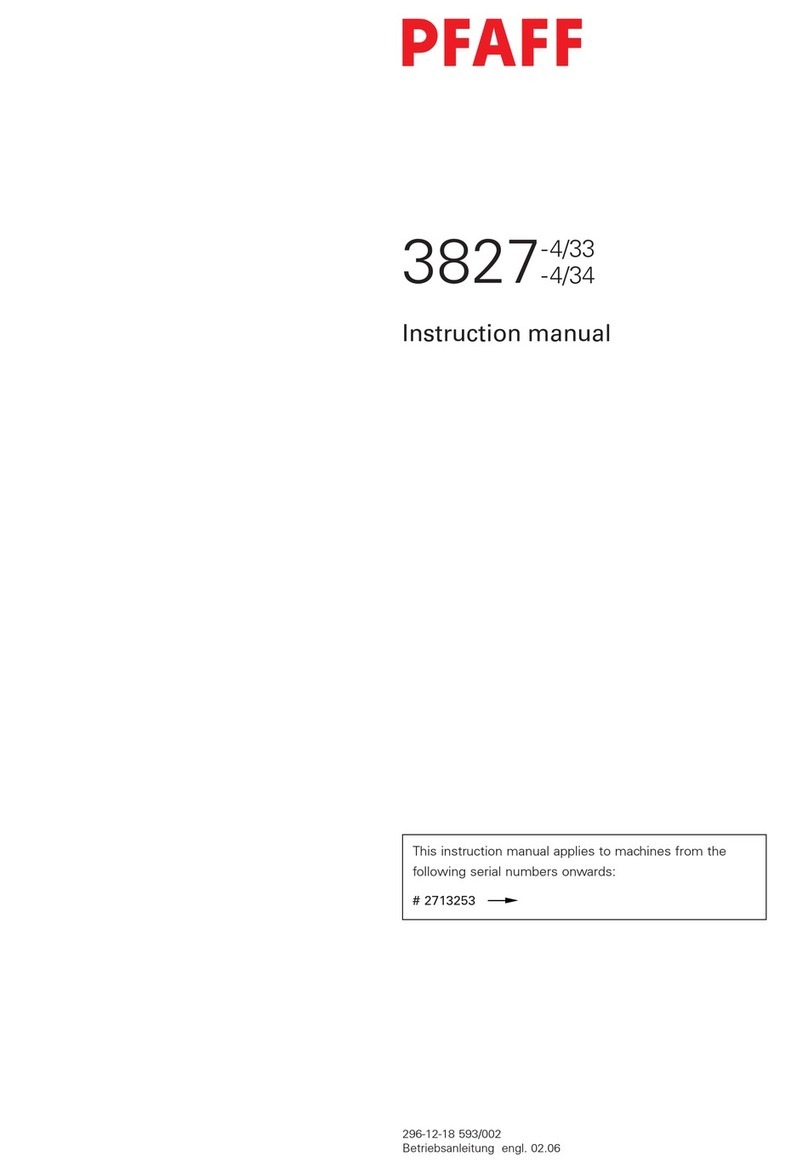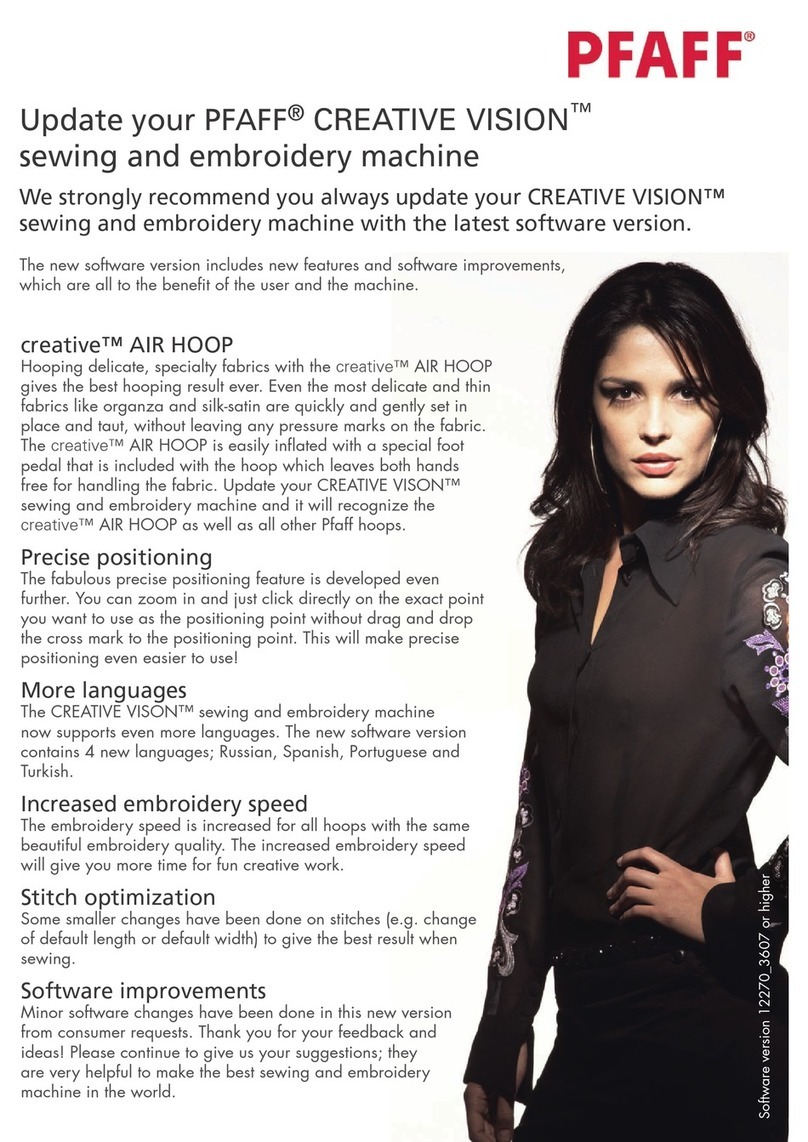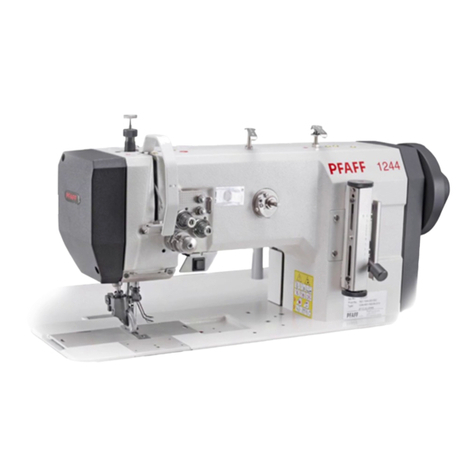
Index
Contents ..................................................................................Page
11.06 Sequences ........................................................................................................................... 65
11.06.01 Creating sequences ............................................................................................................. 65
11.07 Selecting programs.............................................................................................................. 68
11.08 Special programs ................................................................................................................. 69
11.09 SAM (Sewing Application Manager) .................................................................................... 69
11.10 Program Management.........................................................................................................69
11.10.01 Calling up the program management ..................................................................................70
11.10.02 Display of the data in the machine memory ........................................................................ 71
11.10.03 Display of the data on the SD-memory card........................................................................ 72
11.10.04 Copying data onto the SD-memory card.............................................................................. 73
11.10.05 Copying data into the machine memory ..............................................................................74
11.10.06 Deleting data in the machine memory................................................................................. 75
11.10.07 Deleting data from the SD-memory card............................................................................. 76
11.10.08 Formatting the SD-memory card ......................................................................................... 77
12 Care and maintenance....................................................................................................... 78
12.01 Maintenance intervals.......................................................................................................... 78
12.02 Cleaning the machine .......................................................................................................... 78
12.03 Cleaning the hook compartment ......................................................................................... 79
12.04 Cleaning the air filter of the air-filter / lubricator .................................................................. 80
12.05 Checking/adjusting the air pressure..................................................................................... 80
12.06 Check oil level for needle drive unit ..................................................................................... 81
12.07 Check oil level for the hook.................................................................................................. 81
12.08 Check oil level for the compressor....................................................................................... 81
13 Adjustment ......................................................................................................................... 82
13.01 Notes on adjustment ........................................................................................................... 82
13.02 Tools, gauges and other accessories ................................................................................... 82
13.03 Abbreviations ....................................................................................................................... 82
13.04 Toothed belts of the hook drive unit .................................................................................... 83
13.05 Drive rods of the bobbin thread trimming device ................................................................ 84
13.06 Switch for sewing start ........................................................................................................ 85
13.07 Basic position of the feed drive unit..................................................................................... 86
13.08 Preliminary adjustment of the work clamp .......................................................................... 87
13.09 Toothed belts of the main drive unit .................................................................................... 88
13.10 Preliminary adjustment of the needle height....................................................................... 89
13.11 Position of the needle plate in relation to the needle .......................................................... 90
13.12 Controlling the stitch symmetry........................................................................................... 91
13.13 Sensor board of the needle drive ( in dismantled state ) ..................................................... 92
13.14 Basic setting of the needle drive unit................................................................................... 94
13.15 Basic position of the work clamp ( lengthwise to the arm )................................................. 95
13.16 Basic position of the work clamp ( crosswise to the arm ) .................................................. 96
13.17 Upper take-up lever position (reference position) ................................................................ 97
13.18 Lifting elbow on the work clamp.......................................................................................... 98
13.19 Work clamp stroke............................................................................................................... 99

